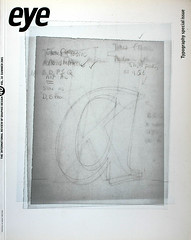Summer 2001
A symbol returns to its true colours
After 40 years of use and abuse, Alberto Korda’s picture of Che retains its symbolic power and presence. Critique by Rick Poynor
Che Guevara’s image has been reproduced so many times since he was shot to death by a Bolivian army sergeant in a mud-floored schoolhouse that it might seem to have become almost meaningless. When supermodel Kate Moss, pop star Robbie Williams, or TV presenter Mariella Frostrup wear the bearded Marxist’s face on their chests, it is unlikely that they hope to signify solidarity with his revolutionary teachings or struggle. Nor does any conscious irony appear to be intended. It’s not that the wearers are either for Che or against Che. His image embodies a charisma, a commitment and a martyrdom so heady, so different from a life of parties, press receptions and fashion shoots, that, even after countless iterations on everything from beer bottles to Swatch watches, it still emits a flattering light.
At the same time, while it might be hard to imagine on the dance floor in a club in London or New York, there are people who take the image straight. There is a long tradition of revolutionary art, especially in Cuba and Latin America, that uses Che’s iconic visage in a straightforwardly inspirational way. Even in western rock, the American group Rage Against the Machine offered Che as a signifier of old-fashioned, unironic rebellion. When the British publisher Pimlico reissued Guevara’s Bolivian Diary in 2000, they opted – a little obviously, you might think – for Alberto Korda’s 1960 photograph, source image for so many graphic derivatives and posterised versions. Restored to the context of his own life, Che’s rugged serenity and romantic visionary presence are undiminished.
The misconceived poster by the Churches’ Advertising Network, showing Christ in the style of Che (see Critique, Eye no. 32 vol. 8), suggested a third way of milking his iconic value. Now that public protest against capitalist excess is back on the media’s agenda, Che’s image is being reactivated within popular culture as a signifier of authentic rebellion. It is not necessary to depict Che himself; it is enough merely to evoke the idea of Che in relation to the new message – as in the Che-Christ – and this can be achieved through the image’s graphic treatment and invocation of a few highly familiar details.
The British youth culture magazine Sleazenation took this approach with its ‘Militant Pop. Do you believe in revolution?’ cover by creative director Scott King. The pop singer Cher – rechristened ‘Cher Guevara’ – is portrayed in the instantly recognisable style of the Cuban Revolution’s mythic hero, with a beret and untamed hair, the simplified black rendering of her face displayed, poster-style, on a red background. The use of Cher in this way is clearly ironic, but it is an irony predicated on our understanding that Che himself was ‘for real’. The magazine’s rabble-rousing cover story concludes, without so much as a nudge or a wink, that only apathy stands in the way of the return of a genuinely radical pop.
At the New Musical Express, the Manic Street Preachers’ visit to Cuba, where they played to an audience that included Fidel Castro, provided another opportunity to clothe a musician in Che’s image – the metamorphosis made even smoother by the fact that the band’s vocalist James Dean Bradfield sports Che-like facial hair. The music weekly may have been poking gentle fun at the band, but the image will have done no harm to their credentials as self-styled revolutionaries of rock.
The most telling reference to Che, appearing the same week as the NME’s, introduced a Guardian Weekend cover story by Naomi Klein about Subcomandante Marcos, public voice of the revolutionary Zapatistas, then engaged on a long march from Chiapas to Mexico City. ‘Why Marcos is the Che Guevara of his generation,’ says the cover line, but even without it the link would be obvious. While key personal details are different – the beret becomes a peaked cap; the beard becomes a mask worn by Marcos to hide his identity; he puffs on a pipe, rather than the Cuban cigar favoured by Che – the graphic streamlining, treatment of the eyes and use of red take for granted the reader’s grasp of what Che represents. After years as a tourist souvenir, poster pin-up, fashion statement and rebel denuded of a cause, Che Guevara re-emerges, against the odds, as a symbol of what he actually stood for: a man prepared to give his life for his political beliefs.
Rick Poynor, writer, founding editor of Eye, London
First published in Eye no. 40 vol. 10, 2001
Eye is the world’s most beautiful and collectable graphic design journal, published quarterly for professional designers, students and anyone interested in critical, informed writing about graphic design and visual culture. It is available from all good design bookshops and online at the Eye shop, where you can buy subscriptions and single issues.

